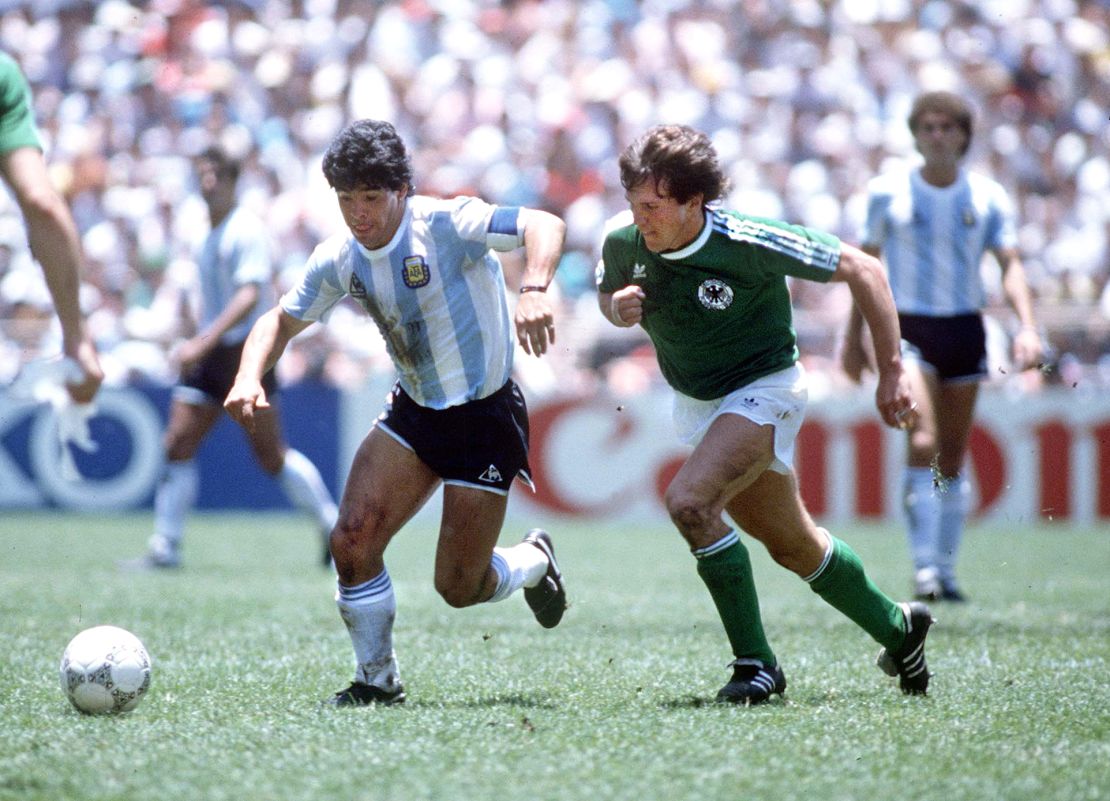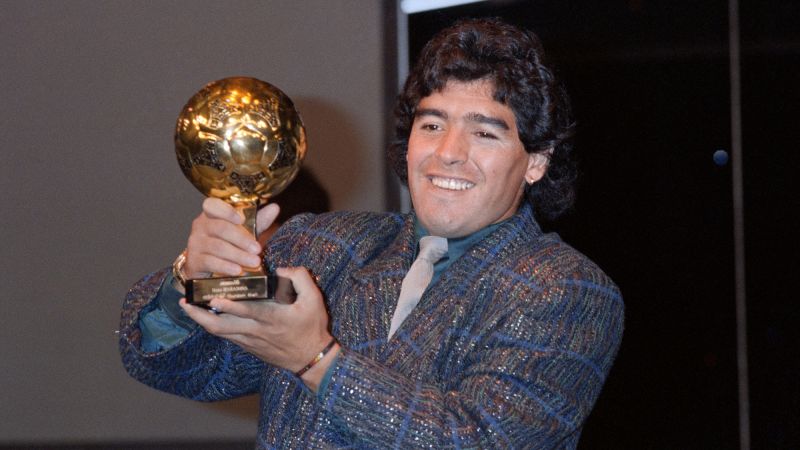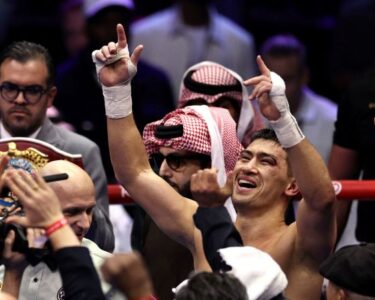CNN
—
Diego Maradona’s Golden Ball trophy from the 1986 World Cup, which had gone missing in contested circumstances for decades, has reappeared and is anticipated to sell for millions of dollars at auction next month.
The trophy, presented to the best player at each World Cup, will be sold by Aguttes auction house in Paris on June 6, the latest piece of memorabilia from Maradona’s glittering career to be expected to fetch a huge sum.
In 2022, his Argentina jersey from the 1986 tournament sold for close to $9.3 million, breaking the record for an item of sports memorabilia, while the “Hand of God” ball from the quarterfinal against England sold for $2.4 million later that year.
“We expect millions [again], but we don’t know exactly because there is no trophy like that in the world … from the pinnacle of [Maradona’s] career,” François Thierry, a sports expert for Aguttes Auction House, told CNN Sport.
“It’s the unique opportunity of a lifetime for the potential buyer.”
Maradona is best remembered for his performance against England during the 1986 World Cup, punching the ball into the net for his infamous “Hand of God” goal before scoring what was later voted the “Goal of the Century,” slaloming past several defenders with a magnificent, weaving run.
The two goals were less than five minutes apart and perfectly encapsulate the sublime skill and tortured genius of the Argentine star, who passed away in 2020.
Argentina went on to defeat West Germany 3-2 in the final and win the second of the country’s three World Cup titles.

The history of the Golden Ball trophy awarded to Maradona in Paris after the tournament is shrouded in mystery.
According to one tale, it was stolen by the mafia while Maradona was playing for Italian side Napoli and subsequently melted into gold ingots; other theories suggested that it was lost during a poker game or to pay off Maradona’s well-documented debts.
“We did a lot of research about it,” said Thierry. “We lost track of it in 1986, there’s been 38 years now. There are a lot of stories and legends, some inconsistent like [being used] to make gold with the mafia.
“We have also two biographies of Maradona where it doesn’t speak about [the trophy being] stolen. We did necessary checks with database Art Loss and Interpol. We called the police but without result, so we think we did everything we have to do.”
Aguttes’ catalogue calls the mafia theory “far-fetched” given that the trophy, a small soccer ball on top of a plinth, is made from a gold-copper alloy.
The item was bought at an auction along with several other trophies, though the anonymous buyer didn’t realize at the time that it was Maradona’s Golden Ball, Thierry explained.
Aguttes has undertaken a range of checks – examining the manufacturing information, the dating, the irregularities, the patina and the oxidation – to verify the trophy’s authenticity.
“When we saw it was okay, it was an amazing discovery,” said Thierry.
Maradona was unquestionably a household name before the 1986 World Cup, but after leading Argentina to the title, he became a global superstar.
The breathtaking skill he demonstrated on the pitch was matched by extreme lows off it: addiction, substance abuse, illegitimate children and feuds over money all blighted the Argentine at various stages throughout his career.
An unacknowledged son, photo opportunities with the mafia and cocaine binges were shown in British Oscar-winning filmmaker Asif Kapadia’s documentary on Maradona’s time at Napoli, where the forward has been granted deific status for leading the club to two league titles and the 1989 UEFA Cup.
His death from a heart attack at the age of 60 was mourned by millions in Argentina and around the world as the loss of one of the game’s greatest ever players.
Maradona’s remains lie in a private cemetery on the outskirts of Buenos Aires, but his children have recently filed a request with the Argentine Courts for the body to be moved to a safer place where fans can pay their respects.
CNN’s Matias Grez and Ben Morse contributed to this report.






